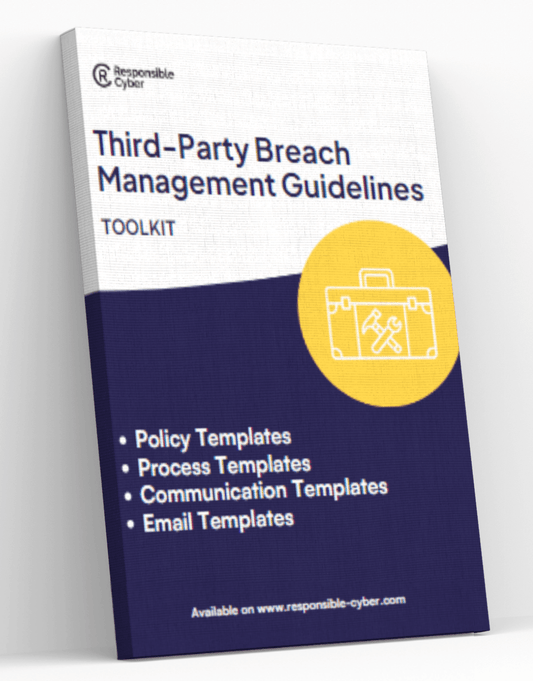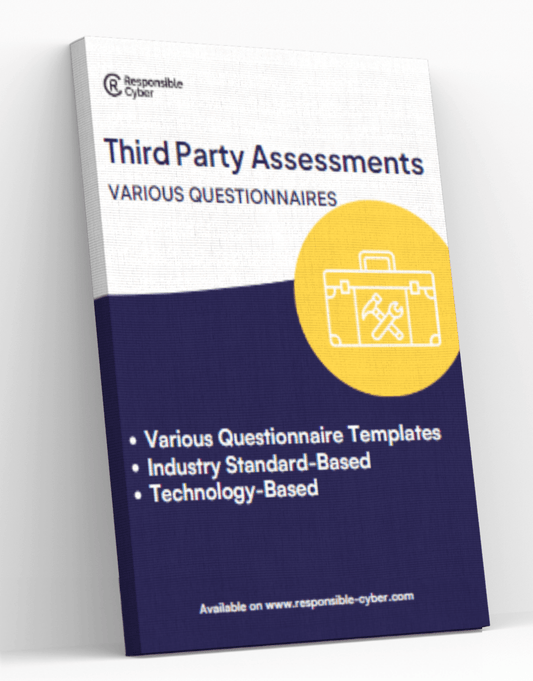Securing the Unexpected: Managing Third-Party Risks from Freelancers and Gig Workers

In today's dynamic workforce, the use of freelancers and gig workers has become increasingly common across various industries. While these flexible work arrangements offer numerous benefits, they also introduce unique cybersecurity risks that organizations must address to protect their digital assets and maintain operational integrity. This comprehensive article delves into the cybersecurity risks associated with using freelancers and gig workers and provides detailed guidance on managing these risks through vetting processes, secure collaboration tools, and clear contractual agreements.
Understanding the Cybersecurity Risks
Why Freelancers and Gig Workers Pose Risks
- Lack of Control: Organizations have less control over the security practices of freelancers and gig workers compared to full-time employees.
- Varying Security Standards: Freelancers may use their own devices and networks, which might not meet the organization's security standards.
- Data Access: Freelancers often need access to sensitive data and systems, increasing the risk of data breaches.
- Transient Relationships: The temporary nature of freelance work can lead to inconsistent security practices and difficulties in maintaining security continuity.
- Diverse Locations: Freelancers and gig workers often operate remotely, potentially from different countries, complicating enforcement of security policies.
Strategies for Managing Third-Party Risks from Freelancers and Gig Workers
1. Comprehensive Vetting Processes
Thorough vetting of freelancers and gig workers is essential for minimizing cybersecurity risks:
Background Checks
- Identity Verification: Confirm the identity of freelancers through reliable verification processes.
- Professional History: Review the professional history of freelancers, including past projects, client feedback, and any relevant certifications.
- Criminal Background Check: Conduct a criminal background check where legally permissible to ensure the freelancer has no history of malicious activities.
Skills and Competency Assessment
- Technical Skills: Assess the freelancer’s technical skills and ensure they meet the security requirements of the project.
- Security Awareness: Evaluate the freelancer’s understanding of cybersecurity best practices and their ability to adhere to them.
Reference Checks
- Client References: Contact previous clients to verify the freelancer’s reliability, professionalism, and adherence to security protocols.
- Project References: Review specific project references to assess the freelancer’s experience with similar tasks and their performance.
2. Secure Collaboration Tools
Using secure collaboration tools is crucial for protecting data and maintaining secure communication with freelancers and gig workers:
Encrypted Communication
- Messaging Apps: Use messaging apps that offer end-to-end encryption to ensure the confidentiality of communications.
- Video Conferencing: Choose video conferencing tools with robust encryption features to protect sensitive discussions.
Secure File Sharing
- Cloud Storage Solutions: Utilize secure cloud storage solutions that offer encryption both in transit and at rest for file sharing.
- Access Controls: Implement access controls to ensure that freelancers can only access files necessary for their tasks.
Project Management Tools
- Integrated Security Features: Select project management tools with integrated security features such as user authentication, role-based access control, and audit logs.
- Secure APIs: Use tools with secure APIs to minimize the risk of data breaches during integrations with other systems.
3. Clear Contractual Agreements
Well-defined contractual agreements are vital for establishing security expectations and responsibilities:
Security Requirements
- Detailed Security Policies: Include detailed security policies in the contract, specifying the security measures freelancers must follow.
- Compliance Obligations: Ensure that freelancers comply with relevant regulatory requirements and industry standards.
Data Protection Clauses
- Data Access and Usage: Define the scope of data access and usage rights, ensuring that freelancers only access data necessary for their work.
- Data Handling Procedures: Specify procedures for handling, storing, and transmitting data securely.
Confidentiality Agreements
- Non-Disclosure Agreements (NDAs): Require freelancers to sign NDAs to protect sensitive information from unauthorized disclosure.
- Confidentiality Clauses: Include confidentiality clauses in contracts to reinforce the importance of protecting proprietary information.
Incident Reporting and Response
- Incident Reporting Protocols: Define clear protocols for reporting security incidents, including timelines and points of contact.
- Response Responsibilities: Outline the responsibilities of the freelancer and the organization in the event of a security incident, ensuring a coordinated response.
4. Continuous Monitoring and Management
Ongoing monitoring and management of freelancers and gig workers are essential for maintaining security:
Access Monitoring
- Audit Logs: Implement audit logs to track access to sensitive systems and data, enabling the detection of unauthorized activities.
- Real-Time Alerts: Set up real-time alerts for any suspicious activities or deviations from expected behavior.
Periodic Security Reviews
- Regular Check-Ins: Conduct regular check-ins with freelancers to review security practices and address any potential issues.
- Security Audits: Perform periodic security audits to ensure compliance with contractual security requirements and policies.
5. Security Awareness and Training
Providing security awareness and training to freelancers and gig workers can enhance their understanding of cybersecurity risks and best practices:
Onboarding Training
- Security Orientation: Include a security orientation as part of the onboarding process for freelancers, covering key security policies and procedures.
- Tool Training: Provide training on the secure use of collaboration tools and platforms.
Ongoing Education
- Regular Updates: Keep freelancers informed about the latest security threats and best practices through regular updates and training sessions.
- Phishing Simulations: Conduct phishing simulations to educate freelancers on recognizing and responding to phishing attacks.
6. Termination and Offboarding Processes
Proper termination and offboarding processes are crucial for maintaining security after the completion of a freelancer’s engagement:
Access Revocation
- Immediate Access Termination: Ensure that all access to systems, data, and collaboration tools is revoked immediately upon contract termination.
- Account Deletion: Delete or disable accounts used by the freelancer to prevent unauthorized access.
Data Retrieval and Destruction
- Data Return: Require freelancers to return all data and materials related to the project.
- Data Destruction: Ensure that any copies of sensitive data held by the freelancer are securely destroyed.
Case Studies and Examples
Case Study 1: Technology Startup and Freelance Developer
Background: A technology startup hired a freelance developer to build a new application, introducing potential cybersecurity risks.
Implementation: The startup conducted a comprehensive vetting process, including background checks and skills assessments. They used secure collaboration tools with encryption and implemented clear contractual agreements with detailed security requirements and confidentiality clauses.
Results:
- Enhanced Security: The startup mitigated potential risks by thoroughly vetting the freelancer and using secure tools for collaboration.
- Data Protection: Clear contractual agreements ensured the protection of sensitive data.
- Successful Project: The freelance developer delivered the application securely and efficiently, meeting the startup’s security standards.
Case Study 2: Financial Institution and Gig Workers
Background: A financial institution engaged gig workers for data analysis tasks, posing potential risks to sensitive financial data.
Implementation: The institution provided security awareness training during onboarding, used secure cloud storage for data sharing, and implemented continuous monitoring of data access. Contracts included stringent data protection clauses and incident reporting protocols.
Results:
- Data Security: Secure collaboration tools and training ensured that sensitive financial data remained protected.
- Proactive Monitoring: Continuous monitoring helped detect and address potential security issues in real-time.
- Compliance: The institution maintained compliance with regulatory requirements through clear contractual agreements and rigorous security practices.
Case Study 3: Healthcare Provider and Freelance Consultant
Background: A healthcare provider hired a freelance consultant to assist with a new health data management system, introducing potential risks to patient data security.
Implementation: The healthcare provider conducted a thorough vetting process, including reference checks and security assessments. They used encrypted communication tools and secure file sharing platforms. Contracts included confidentiality agreements and clear data handling procedures.
Results:
- Protected Patient Data: The use of secure tools and clear data handling procedures ensured the protection of patient data.
- Effective Collaboration: Secure communication and collaboration facilitated the successful implementation of the new system.
- Risk Mitigation: Comprehensive vetting and contractual agreements mitigated potential risks associated with the freelance consultant.
Conclusion
The use of freelancers and gig workers offers numerous benefits, including flexibility and access to specialized skills. However, these work arrangements also introduce unique cybersecurity risks that organizations must address to protect their digital assets and maintain operational integrity. By implementing comprehensive vetting processes, using secure collaboration tools, establishing clear contractual agreements, and providing ongoing monitoring and training, organizations can effectively manage third-party risks associated with freelancers and gig workers. Embrace these best practices to secure your organization against unexpected threats and ensure the successful and secure engagement of freelance talent.
Check out more related articles:
- The Importance of Post-Implementation Strategies in Third-Party Risk Management for Higher Education Institutions
- The Arrival of PCI DSS v4.0: A Shift in Data Security Standards
- The Truth About SOC 2 Certification







